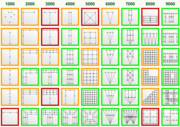Peach
Peaches thrive in the same mild climates as grapevines and are often found in the same regions. Cultivating them on warm facades or walls as espalier fruit allows peaches to grow even in cold climates-- of course with your commitment and enthusiasm!
Lat.: Prununs persica

How to thrive... where to find...
Full sun, unshaded south to south-west walls are ideal for peach trees; in some cases, southeast walls might work. Important to know when buying plants: depending on the location, you can choose between two kinds of grafting bases. On dry, light, sandy soils (wine-growing climate), a seedling rootstock is necessary (that is, the peach can be grafted onto a peach rootstock); this is probably also almost always available. In heavy, loamy, clayey, moist, or very fertile soils, as well as in areas with high precipitation and in harsher climates- peaches must be grafted onto a plum base (e.g. rootstock "Brompton" or "Marunke"). Peach trees need a lot of water to produce their fruit; the soil should not dry out after flowering! Peach plants for espalier fruit can be found at regional nurseries or ordered online.
Characteristics and Pruning
When cultivated on an espalier, peach is treated as a shaped tree. The flowers are white, pink, or wine red, and flowering is very early, which also means that fertilisation could be jeopardized in later frosts. Fruit characteristics vary depending on the cultivar. A cultivar should be chosen according to the expected time of ripening. Grown as espalier fruit, peaches will ripen 2 or even 3 weeks earlier than they would when planted as a free-standing tree; keep this in mind and don't forget them during vacation time! Peach trees grow mainly at their extremities, and may tend to bald at their base. Peaches are heavily susceptible to leaf curl (there resistant varieties are now available), as well as mildew and aphids. See technical literature (readily available online) for pruning techniques.
Climbing Supports for the Facade
The table at the bottom of this page indicates which wire rope trellis systems should be used for a peach espalier tree. Choose a trellis in our heavy or massive ranges (for a larger space between the facade and the fruit) or in the medium range, or even in the easy basic range. A wooden trellis may also be used.
It is difficult to train peach trees to strictly symmetrical shapes -- they are most often trained to free "fan" shapes, preferably with a fork at the base of the trunk to avoid having only one dominant trunk in the center. The wire trellis must anchor the tree to the facade and be stable enough, as well as providing enough space to air the foliage. The trellis should be built as described for shaped trees. The main axes of the trellis should be 35 - 45 cm apart. The peaches may be planted in front of the warming facade with no trellis, but they are then more vulnerable in cases of strong wind or storms.
Wire rope trellises for peach trees
Please click on the graphic illustrations for details!
| = suitable | = of limited suitability | = unsuitable |


























































